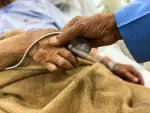Cardiopulmonary resuscitation (CPR) is a lifesaving technique that can mean the difference between life and death in cases of cardiac arrest. However, the effectiveness of CPR largely depends on the skills and knowledge of the person administering it. This is where CPR instructors play a pivotal role. Their expertise and dedication ensure that more individuals are equipped to respond effectively in emergencies, significantly increasing the chances of survival for those in need.
The Importance of Quality Training
Quality CPR training is critical because it ensures that individuals are not only familiar with the steps of CPR but are also confident and competent in performing them under pressure. CPR instructors are responsible for delivering this training, making their role vital. They provide hands-on practice, feedback, and real-life scenarios that prepare trainees for the high-stress environment of an actual cardiac emergency.
Staying Updated with the Latest Guidelines
CPR techniques and guidelines are continuously evolving based on the latest medical research and recommendations. CPR instructors are responsible for staying updated with these changes and incorporating them into their training programs. This ensures that learners receive the most current and effective instruction, which is crucial for maximizing the chances of successful resuscitation.
Instilling Confidence and Calm
One of the most significant challenges during a cardiac emergency is maintaining calm and confidence. CPR instructors play a critical role in this aspect by building the confidence of their students. Through repetitive practice and simulation of emergency scenarios, instructors help trainees become more comfortable with their skills, reducing hesitation and anxiety when they need to act.
Fostering a Community of Lifesavers
CPR instructors are not just teaching a skill; they are fostering a community of lifesavers. By educating a diverse range of people – from healthcare professionals to ordinary citizens – they create a network of individuals ready to respond to cardiac emergencies at any time. This widespread preparedness can dramatically improve survival rates, especially in community settings where immediate professional medical help may not be readily available.
The Ripple Effect of CPR Training
The impact of CPR instructors extends beyond their direct students. Each person trained in CPR can potentially save a life, and those who have undergone training often become advocates for CPR education within their communities. This ripple effect can lead to a greater overall awareness and readiness to respond to cardiac emergencies, further enhancing public health and safety.
Conclusion
The role of CPR instructors is indispensable in survival during cardiac emergencies. Their commitment to providing high-quality training, staying abreast of the latest guidelines, and instilling confidence in their students ensures that more people are prepared to act swiftly and effectively when it matters most. By fostering a community of trained responders, CPR instructors not only save lives directly but also contribute to a culture of preparedness and resilience that benefits society as a whole. Could you see yourself teaching CPR? Learn more to become an instructor.
